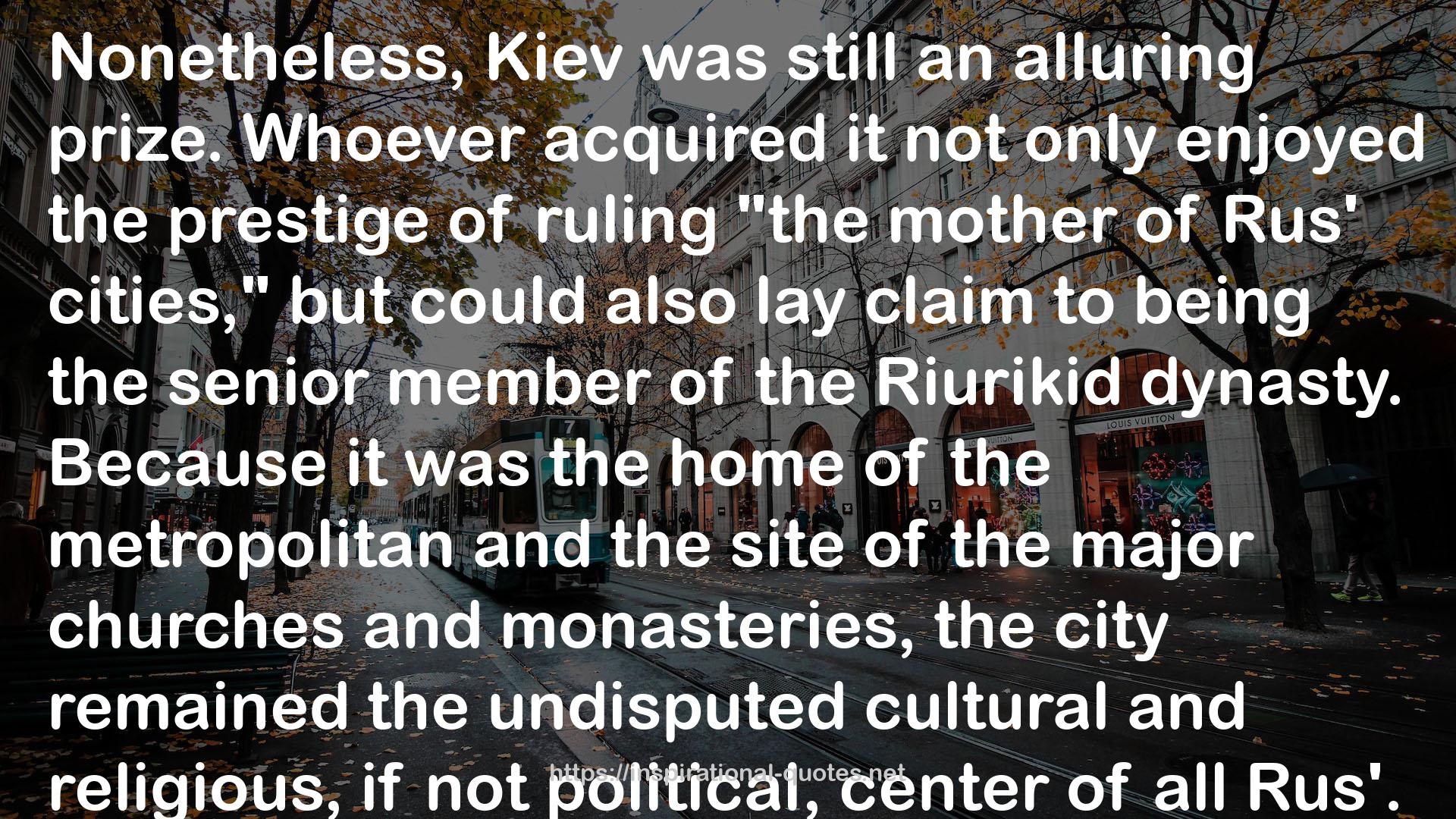" Nonetheless, Kiev was still an alluring prize. Whoever acquired it not only enjoyed the prestige of ruling "the mother of Rus' cities," but could also lay claim to being the senior member of the Riurikid dynasty. Because
it was the home of the metropolitan and the site of the major churches and monasteries, the city remained the undisputed cultural and religious, if not political, center of all Rus'. Even with the decline in its population and territory, Kiev and its lands were still among the most developed and populous in all of Ukraine.
Kiev's assets were also its liabilities, however. Princely competition for the city continued unabated. The Ukrainian historian Stefan Tomashivsky calculated that between 1146 and 1246, twenty-four princes ruled in Kiev on forty-seven separate occasions. Of these, one ruled seven separate times, five ruled three times each, and eight occupied the throne twice each. Significantly, thirty-five princely tenures lasted for less than a year each.? One prince took a rather drastic approach in dealing with the problem of Kiev. In 1169, unsure of his ability to retain control of the city once he had won it and unwilling to have it overshadow his growing domains in the northeast, Andrei Bogoliubsky, the prince of Vladimir-Suzdal and a forerunner of the princes of Moscow, attacked Kiev and savagely sacked it. It never completely recovered from this destructive raid. "
Image for Quotes
 it was the home of the metropolitan and the site of the major churches and monasteries, the city remained the undisputed cultural and religious, if not political, center of all Rus'. Even with the decline in its population and territory, Kiev and its lands were still among the most developed and populous in all of Ukraine.
it was the home of the metropolitan and the site of the major churches and monasteries, the city remained the undisputed cultural and religious, if not political, center of all Rus'. Even with the decline in its population and territory, Kiev and its lands were still among the most developed and populous in all of Ukraine.Kiev's assets were also its liabilities, however. Princely competition for the city continued unabated. The Ukrainian historian Stefan Tomashivsky calculated that between 1146 and 1246, twenty-four princes ruled in Kiev on forty-seven separate occasions. Of these, one ruled seven separate times, five ruled three times each, and eight occupied the throne twice each. Significantly, thirty-five princely tenures lasted for less than a year each.? One prince took a rather drastic approach in dealing with the problem of Kiev. In 1169, unsure of his ability to retain control of the city once he had won it and unwilling to have it overshadow his growing domains in the northeast, Andrei Bogoliubsky, the prince of Vladimir-Suzdal and a forerunner of the princes of Moscow, attacked Kiev and savagely sacked it. It never completely recovered from this destructive raid." style="width:100%;margin:20px 0;"/>